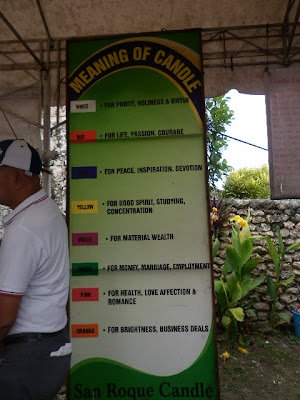Inside the church.....
Our Cebu trip won't be completed without visiting the Basilica Minore del Santo Nino. This church is located just beside the Magellan's Cross (http://joneeacedilla.blogspot.com/2013/04/magellans-cross-cebu-city-philippines.html).
Basilica Minore del Santo Nino is the oldest Catholic church in the Philippines. It was founded in the 16th century.
Outside the church
The Spanish term for this church is Basilica Menor del Santo Nino and the Italian version is Basilica Minore del Santo Bambino.
It says:
CHURCH AND CONVENT OF
SANTO NINO
SANTO NINO
The church and convent erected by the Augustinian Fathers under the Rev. Andres Urdaneta in 1565 were the first established in the Philippines. Both were burned down on November 1, 1566. The second church was likewise destroyed by fire in March of 1628. But rebuilt soon after (1628-1629) under the administration of the historian Rev. Juan de Medina, O. S. A. The present massive church was designed and constructed during the priorship of Rev. Juan Albarran O. S. A. (1735-1737). The Santo Nino venerated in the church since the time of Legaspi, is the center of intense devotion and religious pilgrimages throught\ out the Visayas.
My second visit and again I took time to stand on line for my 2nd encounter and prayer for Sto. Nino. This is also to complete my pilgrimage or BISITA to the churches of Visayas since I already started in Bohol's Baclayon Church (http://joneeacedilla.blogspot.com/2013/04/baclayon-church-bohol-philippines.html).
Retained Spanish designed building....
Saying my prayers....
This image of Sto. Nino is the SAME IMAGE of statue that Ferdinand Magellan gave to Rajah Humabon's wife after Humabon's baptism.
This Sto. Nino is the center of all pilgrimage.
I hope you enjoyed our little tour here in Basilica Minore del Santo Nino. For more of Cebu, please check out the following:
http://joneeacedilla.blogspot.com/2013/04/magellans-cross-cebu-city-philippines.html
http://joneeacedilla.blogspot.com/2013/05/skywalk-extreme-adventure-crown-regency.html
Please follow this little momma blogger on instagram: slimwitch
http://joneeacedilla.blogspot.com/2013/05/skywalk-extreme-adventure-crown-regency.html
Please follow this little momma blogger on instagram: slimwitch

















































